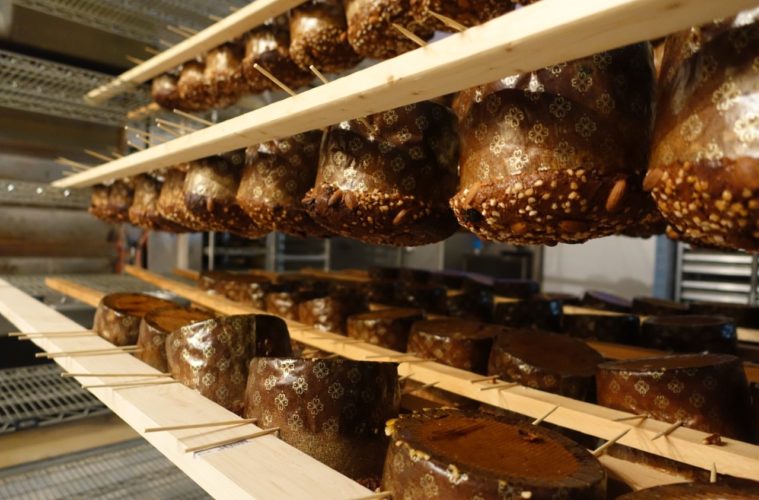This traditional Italian treat is rich with butter and sugar, heaven-scented with vanilla and yeast, studded with candied fruit, and synonymous with Christmas. It’s a little bit bread, a little bit cake, and a lot delicious. Even the name is festive.
If your only experience with panettone is what you find in a box in the grocery store, allow us to offer a handcrafted alternative. The painstakingly created, get-it-before-it’s gone panettone from Annarosa’s Bakery in Salisbury, where bakers and owners Bill Malatesta and Jane Kenny have turned their annual panettone making into a highly anticipated Christmas event.
It takes more than a week to make, Malatesta says, but the results are worth it.
“It’s a supercharged brioche, like none you’ve ever had,” says Malatesta.
This year, Annarosa’s panettone is hitting the shelves on Thursday, December 11, which means that the bakers have been hard at work preparing these special breads since early in the month.
Annarosa’s panettone starts with a naturally leavened sourdough mix that takes days to feed and develop. Then, the bakers add the richness—lots of butter, sugar, egg yolks, flour, honey, and malt in a careful, 10-step process—plus imported whole-bean vanilla, candied lemon and orange peel, raisins, and what Malatesta calls the “secret ingredient,” chopped oranges. Proofing the dough takes even more time and cannot be rushed.
“You learn patience with this product,” Malatesta says. “It’s ready to go in the oven when it’s ready to go in the oven.”
Finally, the pièce de résistance: A sweet glaze made of almonds, granulated sugar, hazelnuts, cornstarch, and egg whites that’s applied just before sliding the panettones into the hot oven.
The panettones are baked and sold in beautiful dark brown corrugated paper molds from Italy that are embellished with gold scrollwork.
Yet even when the panettone’s time in the oven is finished, the bakers are not. Instead, they must quickly start what may be the trickiest part of all: A race against time to pierce the panettones through the bottom with bamboo skewers and hang them upside down to cool and set. Without this step, the weight of the fruit would collapse the bread, Malatesta says.
All of that work certainly pays off.
“The final product is just off the charts,” Malatesta says.
The panettones are a rich mahogany brown. When you bite into a slice, the glaze is sweet and crunchy. Inside, the bread is rich and decadent, with a moist crumb and a cascade of flavor notes from the butter, fruit, and vanilla.
“It has a dream-like quality,” Malatesta says.
Although panettone is tasty any time of day—and looks especially pretty crowning a table with its decorative paper and ribbon—Malatesta likes his for breakfast, warmed for just a few seconds in the microwave and paired with a rich cup of coffee or espresso.
Panettone is perfect for snacking or gifting, or you can do what Malatesta and Kenny do: take it on vacation. After Christmas, they head to the Caribbean with their panettone, which they’ll eat oceanside, always attracting a big crowd eager for a sample.
“It tastes better on the beach,” Malatesta says.

